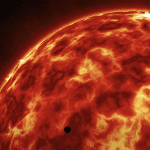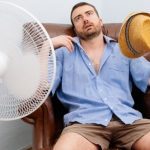 Our World
Our World  Our World
Our World  Weird Stuff
Weird Stuff 10 Fascinating Facts You Might Not Know About Snow
 Miscellaneous
Miscellaneous Top 10 Things Crypto Was Supposed to Change & What Actually Did
 History
History 10 Huge Historical Events That Happened on Christmas Eve
 Music
Music 10 Surprising Origin Stories of Your Favorite Holiday Songs
 History
History 10 Less Than Jolly Events That Occurred on December 25
 Weird Stuff
Weird Stuff 10 Funny Ways That Researchers Overthink Christmas
 Politics
Politics 10 Political Scandals That Sent Crowds Into the Streets
 Weird Stuff
Weird Stuff Ten Bizarre Facts About The Doge Meme
 Our World
Our World 10 Ways Your Christmas Tree Is More Lit Than You Think
 Our World
Our World 10 Archaeological Discoveries of 2025 That Refined History
 Weird Stuff
Weird Stuff 10 Fascinating Facts You Might Not Know About Snow
 Miscellaneous
Miscellaneous Top 10 Things Crypto Was Supposed to Change & What Actually Did
Who's Behind Listverse?

Jamie Frater
Head Editor
Jamie founded Listverse due to an insatiable desire to share fascinating, obscure, and bizarre facts. He has been a guest speaker on numerous national radio and television stations and is a five time published author.
More About Us History
History 10 Huge Historical Events That Happened on Christmas Eve
 Music
Music 10 Surprising Origin Stories of Your Favorite Holiday Songs
 History
History 10 Less Than Jolly Events That Occurred on December 25
 Weird Stuff
Weird Stuff 10 Funny Ways That Researchers Overthink Christmas
 Politics
Politics 10 Political Scandals That Sent Crowds Into the Streets
 Weird Stuff
Weird Stuff Ten Bizarre Facts About The Doge Meme
 Our World
Our World 10 Ways Your Christmas Tree Is More Lit Than You Think
10 Brave Predators Which Hunt Dangerous and Deadly Prey
Modern humans have it so easy. Among those who eat meat, few will ever have to hunt their own lunch, let alone risk serious pain or even death for it. Many species of animal lack this luxury. Fetching food for them means a ferocious fight with animals that can bite, sting, or poison them. Why they hunt such difficult prey is a mystery, but many have evolved elaborate and impressive methods of disarming their victim’s defenses. Here are ten brave (or crazy) predators which prey on vicious and venomous animals.
Related: 10 Animals That Hunted Our Ancestors
10 Bee-Eaters
With their painful sting and tendency to swarm, it can seem like bees should have no natural predators. Even without the painful possibility of being stung, they hardly look appetizing. At least not to humans. Bees actually have numerous natural predators, but they are so central to the diet of one bird species that the birds are even known as “bee-eaters.”
There are 22 varieties of bee-eater, and they live in all kinds of environments, including rainforests and deserts. They are usually colorful and possess long black beaks with which they skillfully pluck bees out of the air mid-flight. Naturally, they do not want to be stung by the bee. To avoid this, they cleverly hit the captured bee’s head against a branch to stun it, and then they flip it over and rub its tail up and down the branch until the stinger and venom sac are removed. Now safe to eat, the bee is swallowed whole. It might sound brutal, but bee-eaters play an important role in keeping insect populations in balance.[1]
9 Sharks
The tendency of these fearsome fish to chow down on almost any living thing is well known, but one snack is certain to give sharks’ terrifying reputations a boost—pufferfish. Pufferfish are small, slow swimmers and, therefore, vulnerable to predators. Still, they possess one of the best defense mechanisms in nature.
By quickly swallowing water and air, they can inflate themselves into a spiky sphere of death several times their normal size. They are covered in sharp spines that stick out when they inflate and are full of tetrodotoxin, one of the deadliest toxins found in nature. A single pufferfish contains enough tetrodotoxin to kill 30 adult humans. Why would anything want to eat something so extremely deadly? Not many predators do, or at least few who do survive. However, sharks are impressively immune to tetrodotoxin. In fact, they are the only species known to be so. So pufferfish are as much a type of prey on the shark’s menu as the next fish.[2]
8 Geckos
These little lizards can be found crawling on walls or hiding in dark spots in warm climates all around the globe. They might scare some people, but they are not easily categorized in most minds as fearsome predators. Their diet usually consists of flies and other small insects, but in Australia, they sometimes enjoy another delicacy—funnel-web spiders. Funnel webs are the deadliest species of spiders. Mature male funnel webs are full of delta-hexatoxin. This neurotoxin makes nerves continuously fire and can cause spasms, blood pressure drops, organ failure, and death. It is lethal to humans.
This helps defend the male funnel webs against predators if they unwittingly stroll into one’s path while looking for a mate. Surprisingly, funnel webs face a variety of predators in the wild, including reptiles like geckos, marsupials like dunnarts, rats, and some birds. In 2020, a study of Sydney funnel-web spiders was interrupted when one of the subjects was swallowed by a gecko while wearing a tracking device on its back.[3]
7 Orangutans
These playful red-haired primates harbor a dark side. While an orangutan’s usual diet consists of fruit, leaves, bark, and insects, scientists reported a disturbing new item on the menu in 2012. The adorable-looking slow loris is a rare primate far smaller than an orangutan, with large eyes and a furry body. While they look cute to humans, to some Sumatran and Bornean orangutans, they look like a great protein-packed snack. There is just one problem: Slow lorises are poisonous.
In fact, they are the only venomous mammals, and their bites are said to be able to rot flesh. Exactly why orangutans would choose to eat these deceptively adorable creatures is up for debate. Some scientists say meat is a fallback food for when the staples of the orangutan diet become scarce.
However, a lack of plant foods has not always been the case when orangutans have been observed eating slow lorises. It may be that scientists simply don’t have much evidence of it happening because they have not specifically looked for it. As for the poison, the orangutans’ superior size seems to make it easy for them to control the small creatures and avoid being bitten.[4]
6 Chacma Baboons
Like orangutans, baboons’ diets are mostly plant based. Chacma baboons of southern Africa mainly eat fruit, bulbs, and roots but have also been found to be very fond of certain animal foods like bird eggs, spiders, centipedes, and lizards. Another delicacy for the baboons is scorpions.
These scurrying, stinging arachnids make a tasty snack for the primates, who hover their hands above the scorpions until the opportunity arises to give them a good slap from above to stun them. The baboons then rub the scorpion along the ground under their hand a few times before they pluck off the stinger and toss it far away. Then, the scorpion is ready to be eaten.
One observer in 1919 noted the baboons munch scorpions with “every appearance of satisfaction.” Given they throw the stinger away, it seems the baboons aren’t hurt if stung. However, the same writer observed that while raiding bees’ nests, baboons appear not to experience as much pain from stings as people do, although they try not to be stung.[5]
5 Centipede-Eaters
Centipedes come in a variety of sizes, but they are mostly creepy and quick and can deliver a nasty bite. These attributes hardly make them appetizing, yet they are the sole food source for a type of South African snake, the aptly named black-headed centipede-eater. Also known as the Cape centipede-eater, these pencil-thin snakes are harmless to humans, but their venom is lethal to centipedes.
They will bite and inject their venom into a centipede’s spine, waiting patiently for it to take effect before devouring the dead critter head first. They are strictly nocturnal and can often be found in deserted termite mounds or under objects such as rocks and logs.[6]
4 Tiger Keelback Snakes
Newborn tiger keelback snakes are not venomous. Without the right diet, they will remain so for life. This makes these Japanese snakes quite unusual for the species. However, wild snakes are known to defend themselves from predators by secreting bufadienolides from glands at the back of their neck. These are toxins that affect the heart and airways.
Since the snakes are not born with a supply of bufadienolides and cannot produce them themselves, they must acquire them through a practice that is surprisingly common in nature—poison theft. Tiger keelback snakes consume poisonous toads, and in the process, they steal the poison for their own use. They even increase its potency. Mothers are able to pass the poison onto their young, who can then hunt toads themselves to continue the cycle.[7]
3 Mongooses
Although highly venomous and despite its name, the king cobra is not at the top of its food chain. Cobras and many other snake species are prey to a small, fierce hunter—the mongoose. Unlike humans, mongooses can tolerate cobra venom thanks to a neurotransmitter called acetylcholine which neutralizes the effect of toxins by preventing them from binding to the nervous system. This means mongooses can kill and eat cobras and many other snake species. So snakes are a dietary staple for a mongoose.
However, the enmity is mutual, and there are snake varieties that eat mongoose too. Mongooses are able to hunt and defend themselves using their vicious claws, fantastic eyesight, speed, and agility. They are so effective they can kill snakes that are bigger than them, and in several places around the world, they are used by humans to control snake and rat populations.[8]
2 Leatherback Turtles
When it comes to the sheer scale of victims consumed, leatherback turtles may be the most vicious predators on the planet. The massive sea creatures can weigh up to 1,415 pounds (640 kilograms) and consume up to 73% of their body weight daily. They have a 100% success rate, far better than more well-known hunters like lions and sharks, and the food they consume contains only a paltry 5 kcal each. So, what are they eating?
Their prey must be abundant, slow, and defenseless. Well, not exactly. Leatherbacks eat jellyfish, which are certainly slow and abundant. However, many unlucky swimmers have found out jellyfish are not defenseless and possess a nasty—sometimes even lethal—sting. But sea turtles are impervious to jellyfish stings because their reptilian scales protect them. And leatherbacks are specially adapted for jellyfish hunting, with scissor-like jaws perfect for catching the creatures and terrifying spikes called papillae which line their throat and ensure their victim is broken down effectively and cannot escape.[9]
1 Orcas
Orcas are worthy of their alternative moniker, “killer” whales. They are predators of a variety of sea creatures, but one dietary staple for some orca populations requires them to face some serious danger before they get their dinner. That staple is the stingray, whose tail contains a barb that could seriously injure a careless or inexperienced orca. While that sounds like a risk worth taking only if the orca is starving, they have even been observed ganging up and killing stingrays for no obvious reason.
Although, it is possible they were aware that humans were watching them, which is why they did not eat the ray. Like many other predators, they may also kill for practice or play. During one observation in which a gang of young orcas killed a ray, divers also guessed the orcas may have been showing off or putting on the display to look threatening.[10]








